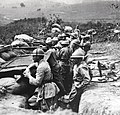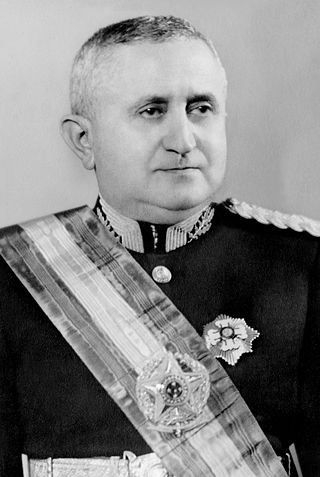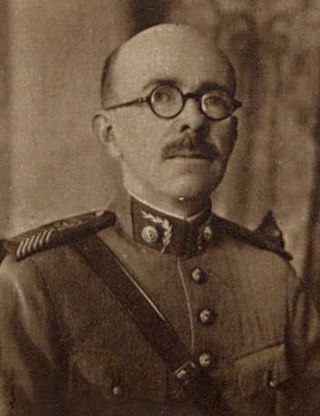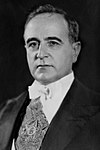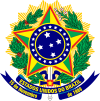This article may require copy editing for grammar, style, cohesion, tone, or spelling.(February 2024) |
This article needs additional citations for verification .(October 2014) |
| Constitutionalist Revolution | |||||||
|---|---|---|---|---|---|---|---|
| |||||||
| |||||||
| Belligerents | |||||||
Constitutionalists
| Loyalists | ||||||
| Commanders and leaders | |||||||
| Strength | |||||||
| 40,000 soldiers (Police, Army and volunteers) 30 Armored Vehicles 44 artillery 9–10 aircraft | 100,000 soldiers (Army, Navy and Police) 90 Armored Vehicles 250 artillery 58 aircraft 4 Warships (Naval blockade of the Port of Santos) | ||||||
| Casualties and losses | |||||||
| 2,500 estimated dead unknown number of wounded | 1,050 estimated dead 3,800 wounded | ||||||
The Constitutionalist Revolution of 1932 (sometimes also referred to as Paulista War or Brazilian Civil War [1] ) is the name given to the uprising of the population of the Brazilian state of São Paulo against the Brazilian Revolution of 1930 when Getúlio Vargas assumed the nation's presidency; Vargas was supported by the people, the military and the political elites of Minas Gerais, Rio Grande do Sul and Paraíba. The movement grew out of local resentment from the fact that Vargas ruled by decree, unbound by a Constitution, in a provisional government. The 1930 Revolution also affected São Paulo by eroding the autonomy that states enjoyed during the term of the 1891 Constitution and preventing the inauguration of the governor of São Paulo, Júlio Prestes, who had been elected president of Brazil in 1930, while simultaneously overthrowing President Washington Luís, who was governor of São Paulo from 1920 to 1924. These events marked the end of the First Brazilian Republic.
Contents
- Opposing forces
- Course of the conflict
- Naval Task Force and naval blockade of São Paulo
- In popular culture
- Gallery
- See also
- Bibliography
- References
The Revolution's main goal was to press the provisional government headed by Getúlio Vargas to adopt and then abide by a new Constitution, since Júlio Prestes was kept from taking office. However, as the movement developed and resentment against Vargas and his revolutionary government grew deeper, it came to advocate the overthrow of the Federal Government, and it was even speculated that one of the Revolutionaries' goals was the secession of São Paulo from the Brazilian federation. However, it is noted that the separatist scenario was used as a guerrilla tactic by the Federal Government to turn the population in the rest of the country against the state of São Paulo, broadcasting the alleged separatist threat throughout the country. There is no evidence that the movement's commanders sought separatism.
The uprising began on July 9, 1932, after four protesting students were killed by government troops on May 23, 1932. On the wake of their deaths, a movement called MMDC (from the initials of the names of each of the four students killed: Martins, Miragaia, Dráusio and Camargo) started. A fifth victim, Alvarenga, was also shot that night, but died months later.
In a few months, the state of São Paulo rebelled against the federal government. Counting on the support of the political elites of two other powerful states, Minas Gerais and Rio Grande do Sul, the politicians from São Paulo expected a quick war. However, the expected support did not materialize, and São Paulo's revolt was militarily crushed on October 2, 1932. In total, there were 87 days of fighting (July 9 to October 4, 1932—with the last two days after the surrender of São Paulo), with a balance of 934 official deaths, though non-official estimates report up to 2,200 dead, and many cities in the state of São Paulo suffered damage due to fighting.
In spite of its military defeat, some of the movement's main demands were finally granted by Vargas afterwards: the appointment of a non-military state Governor, the election of a Constituent Assembly and, finally, the enactment of a new Constitution in 1934. However, the new Constitution was short-lived, as in 1937, amidst growing extremism on the left and right wings of the political spectrum, Vargas closed the National Congress and enacted another Constitution, which established the so-called Estado Novo after a coup d'état.
July 9 marks the beginning of the Revolution of 1932, and is a holiday and the most important civic date of the state of São Paulo. The Paulistas (as the inhabitants of São Paulo are known) consider the Revolution of 1932 as the greatest movement of its civic history. It was the first major revolt against the government of Getúlio Vargas.














